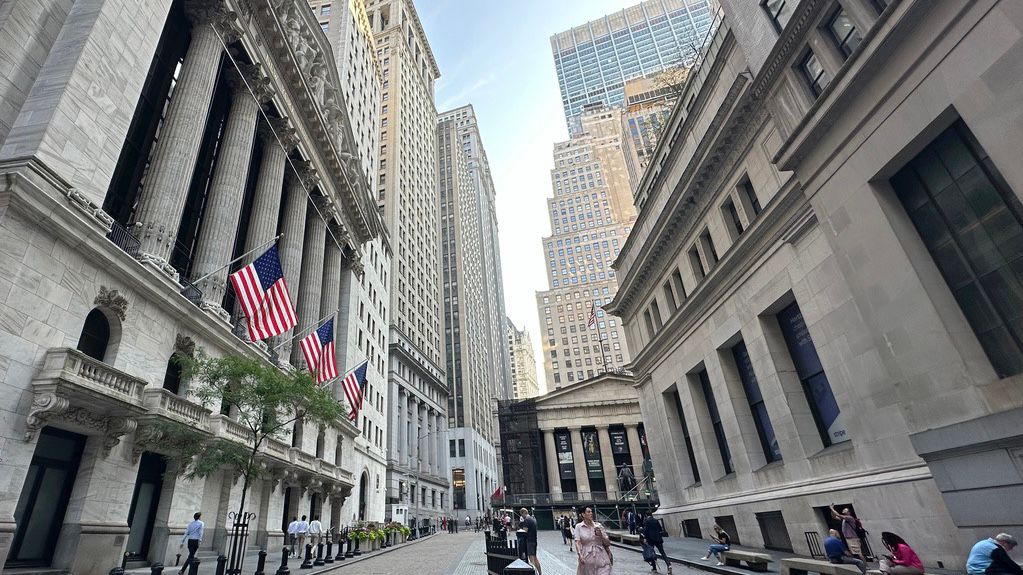Jobs
Wall Street climbs after positive U.S. job market report

U.S. stocks are climbing Thursday after a better-than-expected report on the job market eased some worries about the slowing economy.
The S&P 500 was rallying by 1.1% in early trading, a day after a big morning gain evaporated and flipped into a loss. The Dow Jones Industrial Average was up 261 points, or 0.7%, as of 9:35 a.m. Eastern time, and the Nasdaq composite was 1.3% higher.
Treasury yields also climbed in the bond market, a signal that investors are feeling less worried about the economy, after a report showed fewer U.S. workers applied for unemployment benefits last week. The number was also better than economists expected.
It was exactly a week ago that worse-than-expected data on unemployment claims helped enflame worries that the Federal Reserve has kept interest rates too high for too long in order to beat inflation. That, along with a rate hike by the Bank of Japan that sent shockwaves worldwide by scrambling a favorite trade among some hedge funds, helped send markets tumbling globally.
At the worst of it, at least so far, the S&P 500 was down roughly 9% from its record set last month. Such drops are regular occurrences on Wall Street, with “corrections” of 10% happening about every year or two.
What made this past drop more scary was how quickly and sharply it happened. A measure of how much investors are paying to protect themselves from future drops for the S&P 500 surged toward the highest level since the COVID crash of 2020.
Still, the market’s swings look more like a “positioning-driven crash” driven by too many investors piling into similar trades having to exit them all at once, rather than the start of a long-term downward market caused by a recession, say strategists at BNP Paribas.
They say it looks more similar to the “flash crash” of 2010 than the 2008 global financial crisis or the 2020 recession caused by the pandemic.
Of course, markets have been quick to turn over the past week regardless of any long-term predictions.
“Today’s jobless claims data may ease some of the concerns raised by last week’s soft jobs report,” said Chris Larkin, managing director, trading and investing, at E-Trade from Morgan Stanley. “But with inflation data due out next week and the stock market still working through its biggest pullback of the year, it’s unclear how much this will move the sentiment needle.”
In the meantime, big U.S. companies continue to turn in profit reports for the spring that are mostly better than analysts expected.
Eli Lilly jumped 10.4% to help lead the market after it delivered stronger profit and revenue than Wall Street had forecast. Sales of its Mounjaro diabetes treatment and its Zepbound weight-loss counterpart are booming, and the company raised its financial forecast for the year.
Robinhood Markets rose 5.2% after reporting stronger growth in profit than expected. It benefited from growth in trading for options, cryptocurrencies and stocks.
They helped offset an 8.7% drop for McKesson, which topped analysts’ expectations for profit in the latest quarter but fell short on revenue. It said growth slowed in its medical-surgical business.
Bumble, the Texas-based dating app, lost about a third of its value, 34.4%, after its forecast for revenue in the third quarter came in well below Wall Street’s.
In the bond market, the yield on the 10-year Treasury rose to 4.00% from 3.95% late Wednesday.
In stock markets abroad, indexes were mixed in Asia and down modestly in Europe. In Japan, which has been home to some of the market’s wildest moves, the NIkkei 225 ticked down by 0.7%. That looks like a ripple after its tidal swings of down 12.4% and up 10.2% to start the week. ___










